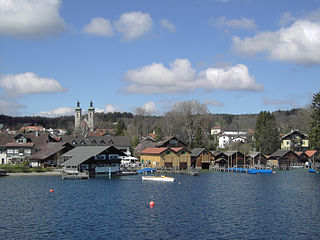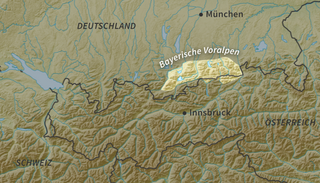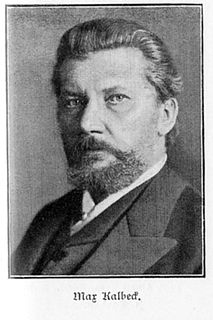Sonata form is a musical structure consisting of three main sections: an exposition, a development, and a recapitulation. It has been used widely since the middle of the 18th century.
The Takács Quartet is a string quartet, founded in Hungary, and now based in Boulder, Colorado, United States.

The Piano Quintet in E-flat major, Op. 44, by Robert Schumann was composed in 1842 and received its first public performance the following year. Noted for its "extroverted, exuberant" character, Schumann's piano quintet is considered one of his finest compositions and a major work of nineteenth-century chamber music. Composed for piano and string quartet, the work revolutionized the instrumentation and musical character of the piano quintet and established it as a quintessentially Romantic genre.
The Piano Quintet in F minor, Op. 34, by Johannes Brahms was completed during the summer of 1864 and published in 1865. It was dedicated to Her Royal Highness Princess Anna of Hesse. Like most piano quintets composed after Robert Schumann's Piano Quintet (1842), it is written for piano and string quartet.
The Grammy Award for Best Chamber Music Performance has been awarded since 1959. The award has had several minor name changes:
The String Quartet No. 1 in F major, Op. 18, No. 1, was written by Ludwig van Beethoven between 1798 and 1800, published in 1801, and dedicated to Joseph Franz von Lobkowitz. It is actually the second string quartet that Beethoven composed.
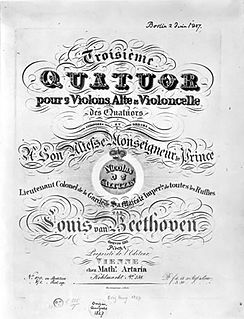
The String Quartet No. 13 in B♭ major, Op. 130, by Ludwig van Beethoven was completed in November 1826. The number traditionally assigned to it is based on the order of its publication; it is actually Beethoven's 14th quartet in order of composition. It was premiered in March 1826 by the Schuppanzigh Quartet and dedicated to Nikolai Galitzin on its publication in 1827.
Cyclic form is a technique of musical construction, involving multiple sections or movements, in which a theme, melody, or thematic material occurs in more than one movement as a unifying device. Sometimes a theme may occur at the beginning and end ; other times a theme occurs in a different guise in every part.

D minor is a minor scale based on D, consisting of the pitches D, E, F, G, A, B♭, and C. Its key signature has one flat. Its relative major is F major and its parallel major is D major.

Franz Schubert's final chamber work, the String Quintet in C major is sometimes called the "Cello Quintet" because it is scored for a standard string quartet plus an extra cello instead of the extra viola which is more usual in conventional string quintets. It was composed in 1828 and completed just two months before the composer's death. The first public performance of the piece did not occur until 1850, and publication occurred three years later in 1853. Schubert's only full-fledged string quintet, it has been praised as "sublime" and as possessing "bottomless pathos," and is generally regarded as Schubert's finest chamber work as well as one of the greatest compositions in all chamber music.
The Austrian composer Arnold Schoenberg published four string quartets, distributed over his lifetime: String Quartet No. 1 in D minor, Op. 7 (1905), String Quartet No. 2 in F♯ minor, Op. 10 (1908), String Quartet No. 3, Op. 30 (1927), and the String Quartet No. 4, Op. 37 (1936).
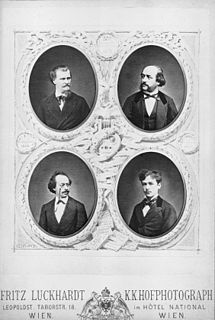
The Hellmesberger Quartet was a string quartet formed in Vienna in 1849. It was founded by Joseph Hellmesberger Sr. and was the first permanent named String Quartet.
Franz Schubert's Symphony No. 4 in C minor, D 417, called by its composer the Tragic, was completed in April 1816, a year after his Third Symphony, when he was 19 years old. It was not premiered publicly, however, until November 19, 1849, in Leipzig, more than two decades after Schubert's death.
The String Quartet No. 16 in E-flat major, K. 428/421b, was composed by Wolfgang Amadeus Mozart in 1783. This is the third of the Haydn Quartets, a set of six string quartets he wrote during his first few years in Vienna and later dedicated to Joseph Haydn.
The Spencer Dyke Quartet was a string quartet active in England through the 1920s. It is best remembered now for a series of pioneering chamber music recordings made for the National Gramophonic Society.
The String Sextet No. 1 in B♭ major, Op. 18, was composed in 1860 by Johannes Brahms and premiered in Hanover by an ensemble led by Joseph Joachim. It was published in 1862 by the firm of Fritz Simrock.

The String Quartet in C minor WAB 111, was composed by Anton Bruckner's in 1862 during his tuition by Otto Kitzler.
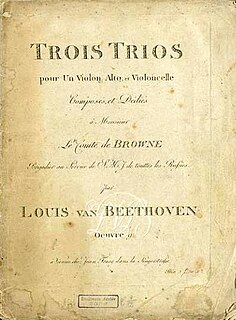
The three String Trios, Op. 9 were composed by Ludwig van Beethoven in 1797–98. He published them in Vienna in 1799, with a dedication to his patron Count Johann Georg von Browne (1767–1827). They were first performed by the violinist Ignaz Schuppanzigh with two colleagues from his string quartet. According to the violinist and conductor Angus Watson, these were probably Franz Weiss on viola and either Nikolaus Kraft or his father Anton on cello. Each of the trios consists of four movements:
Franz Schubert composed his String Quartet No. 10 in E-flat major in 1813.

